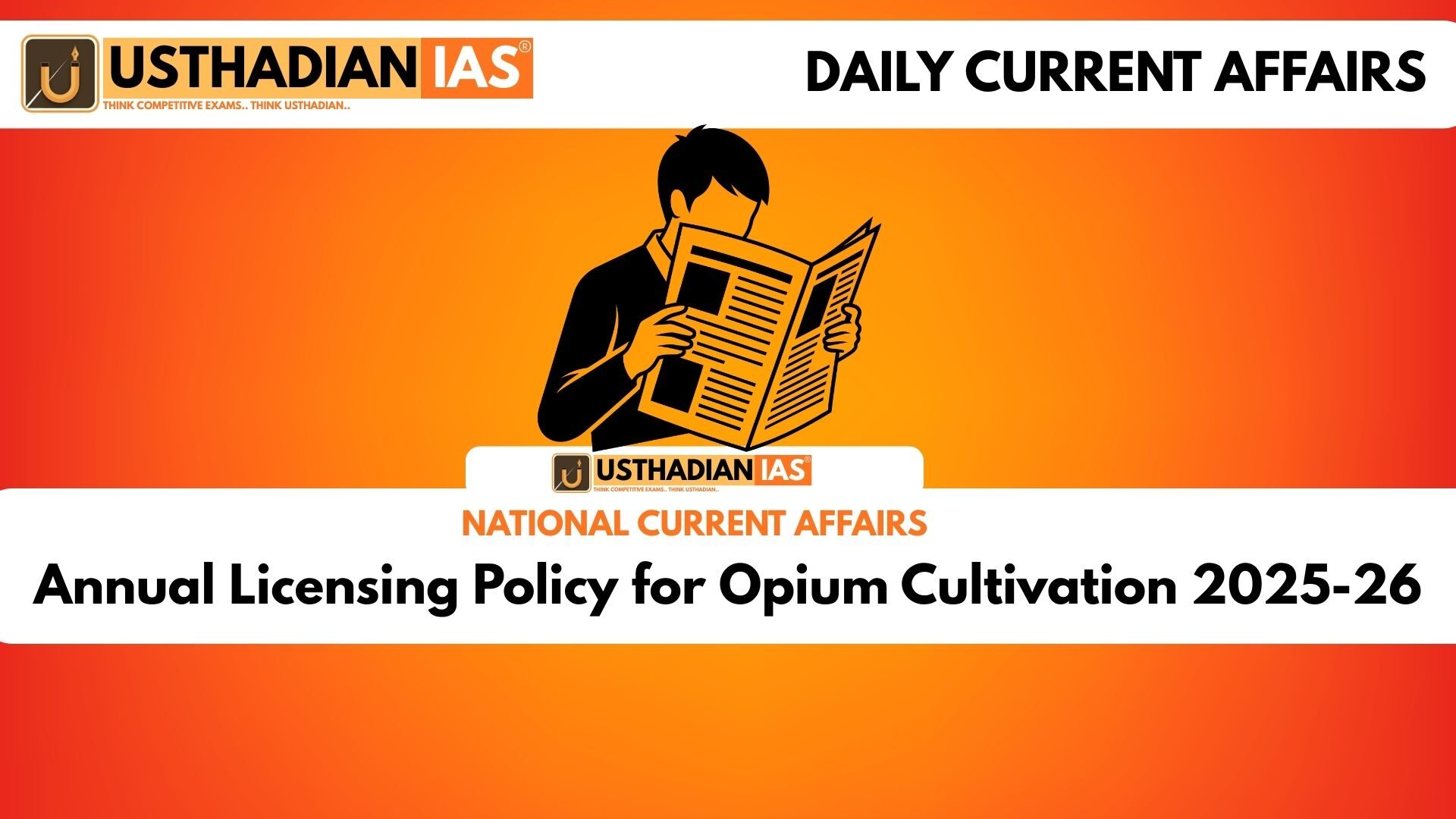Annual Licensing Policy
Annual Licensing Policy for Opium Cultivation 2025-26: The Union Government has announced the Annual Licensing Policy for Opium Cultivation 2025-26 under the Narcotic Drugs and Psychotropic Substances (NDPS) Rules 1985. These rules are framed under the NDPS Act 1985, which empowers the government to regulate narcotic substances.
Each year, the central government notifies the tracts, eligibility conditions, and licensing framework for opium cultivation. This ensures that cultivation remains restricted and controlled, aligned with medical and scientific needs.
Static GK fact: The NDPS Act was enacted in 1985 to consolidate and amend the laws relating to narcotic drugs in India.
Opium and Its Uses
The opium poppy plant produces opium gum, which contains valuable alkaloids like morphine, codeine, and thebaine. Morphine is used as a pain-relieving medicine, while codeine is an important ingredient in cough syrups. The seeds and oil of the plant are also used as edible products.
Static GK Tip: The United Nations Single Convention on Narcotic Drugs, 1961, is the international treaty that regulates production and trade of narcotics.
India’s Global Position
India holds a unique position as the only country authorised by the UN Convention (1961) to produce gum opium for export and domestic medicinal purposes. While 11 other countries cultivate the poppy, they extract only alkaloids, not gum. This places India in a key role for global medicinal supply chains.
Licensed Cultivation in India
Under NDPS provisions, cultivation is permitted only in notified areas of Madhya Pradesh, Rajasthan, and Uttar Pradesh. Farmers in these states receive licenses directly from the Central Bureau of Narcotics (CBN), Gwalior, functioning under the Ministry of Finance.
The licenses strictly specify conditions, including the mandatory surrender of the entire opium harvest to the government. Farmers are paid according to the price fixed by the central government.
Static GK fact: The Central Bureau of Narcotics was set up in 1950 and is headquartered in Gwalior, Madhya Pradesh.
Importance of Licensing
The annual licensing policy helps maintain a balance between the need for medical alkaloids and prevention of illicit drug diversion. The controlled framework ensures legal cultivation while also safeguarding farmers’ livelihoods in the notified states.
Static Usthadian Current Affairs Table
Annual Licensing Policy for Opium Cultivation 2025-26:
| Topic | Detail |
| Annual Licensing Policy 2025-26 | Announced by Union Government under NDPS Rules 1985 |
| Governing Law | NDPS Act 1985 |
| UN Convention | 1961 Single Convention on Narcotic Drugs |
| India’s Position | Only country authorised to produce gum opium |
| Alkaloids in Opium | Morphine, codeine, thebaine |
| Uses | Pain relief medicines, cough syrups, edible seeds and oil |
| Licensed States | Madhya Pradesh, Rajasthan, Uttar Pradesh |
| Licensing Authority | Central Bureau of Narcotics, Gwalior |
| Farmer Requirement | Entire opium surrendered to government |
| Ministry in Charge | Ministry of Finance |








